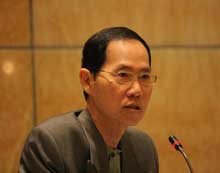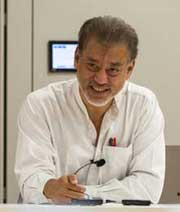Transforming Society, Financialization Destroys Social Solidarity
PENANG and KUALA LUMPUR, Jun 04 (IPS) - Finance has not stopped at dominating the real economy. The tentacles of finance have reached into significant, if not most parts of society.
Gerald Davis characterises modern society, where finance is dominant, as a ‘portfolio society', in which aspects of social life have been securitized and transformed into a kind of capital or investment to be managed.
Social insurance
One area that affects many is ‘social insurance', with state-organized social protection being replaced by market options for individuals. US social security was introduced as part of Roosevelt's New Deal to provide adequate economic protection to workers after retirement.

This program has been compulsory, universal, and managed by the state. This was often supplemented by private pension funds provided and managed by companies for their workers.
Under President Reagan, the ‘401K' was introduced in 1981 to allow and encourage employees to manage their own retirement funds and plans. Companies were only too happy to replace their pension plans with 401K as many had unfunded pension liabilities.
The responsibility of investment and management of retirement funds now rests with employees, most of whom are poorly equipped to do consistently well with their market investments. Asset management funds have since mushroomed, with some becoming big business.
Housing
Two other areas where financialization has penetrated social life through securitization are housing and education, with illiquid assets transformed into liquid ones to be bought and sold.

Thus, financialization has sought to marketize all products and services. Banks are supposed to provide credit for the wheels of industry and trade. But more and more banks have moved away from this to instead provide credit for personal consumption and investment or speculation.
Financing home mortgages is big money. Bank lending to the property sector in developed economies accounts for between 60% to 70% of total credit. Traditionally, banks provide collateralized long-term loans to finance housing. These loans sit on the books of banks until the mortgages are paid off.
Financial innovation
From the 1980s, with financial liberalization and deregulation, ‘innovative' new products were introduced, with the most impactful being loan securitization. Illiquid bank loans were consolidated and packaged as securities to be traded, making illiquid assets liquid.
Banks could then sell off these securities to investors, thus reducing illiquid assets on their balance sheets and freeing up capital to book more loans to be repackaged and sold off. This process can be repeated ad infinitum.
Non-market finance has thus been transformed into market-based financing involving ‘slicing and dicing'. One option to increase profitability is by ‘slicing' loans by credit quality into tranches to be sold to investors with different risk appetites.
In this structure, loans with weaker credit quality are mixed with better ones before ‘dicing' them to be sold on, betting that defaults will only be limited to tranches with weaker credit ratings and by understating the problem of contagion. All these became known as collateralized debt obligations (CDOs)
In other words, ethereal financial products with weak or vague links to actual underlying assets have been created. CDOs have been used as underlying assets, and even repackaged for the next level of CDOs, referred to as CDO2, or CDO-squared, and after another round, as CDO3.
The CDOs business soon proved lucrative and quickly became popular. The total volume worldwide increased 23-fold in eight years from US$23 billion in 2000 to US$544 billion in 2007, when they imploded; the rest is history.
Besides CDOs, there are credit default swaps (CDSs). These CDSs are ostensibly innovative new forms of insurance written by financial institutions and sold to buyers who take a different view of the default risk of the CDOs. For an investment banker, it is all about "taking a view", i.e., betting on a financial product that has been created.
Human ‘capital'
The same story goes for education once principally provided by the state to all citizens, often free of charge at elementary and secondary levels, and sometimes or partly at tertiary level. But more and more education is now seen as ‘human capital investment'.
With cutbacks in state funding, expansion of private schools, and fee escalation, education has become an expensive investment, with many forced to take student loans. Student loans form the second largest category of loans just behind housing mortgages. This again offers opportunities for profit making.
Many student loans have been securitized into student loan asset-backed securities (called SLABS) to be traded. In 2019, total US student debt amounted to US$1.5 trillion involving 44 million borrowers. The average US college student now has US$34,000 debt hanging over his or her head.
Dr Michael LIM Mah Hui has been a university professor and banker, in the private sector and with the Asian Development Bank.
Jomo Kwame Sundaram, a former economics professor, was United Nations Assistant Secretary-General for Economic Development, and received the Wassily Leontief Prize for Advancing the Frontiers of Economic Thought.
© Inter Press Service (2019) — All Rights ReservedOriginal source: Inter Press Service
 Global Issues
Global Issues